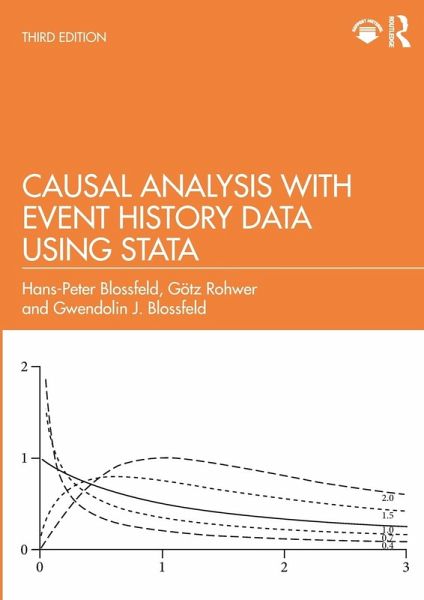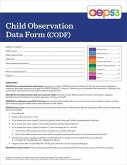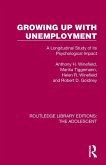Gotz Rohwer, Gwendolin J. Blossfeld, Hans-Peter Blossfeld
Causal Analysis with Event History Data Using Stata
Gotz Rohwer, Gwendolin J. Blossfeld, Hans-Peter Blossfeld
Causal Analysis with Event History Data Using Stata
- Broschiertes Buch
- Merkliste
- Auf die Merkliste
- Bewerten Bewerten
- Teilen
- Produkt teilen
- Produkterinnerung
- Produkterinnerung
It is an invaluable resource for both novice and experienced researchers from sociology, economics, political science, education, psychology, demography, epidemiology, management research and organizational studies, as well as medicine and clinical applications) who need an introductory text- book on continuous-time event history analysis.
Andere Kunden interessierten sich auch für
![Research Methodology and Quantitative Techniques Research Methodology and Quantitative Techniques]() K.A. Varghese (Rajasthan College of Agri)Research Methodology and Quantitative Techniques64,99 €
K.A. Varghese (Rajasthan College of Agri)Research Methodology and Quantitative Techniques64,99 €![Writing Empirical Research Reports Writing Empirical Research Reports]() Melisa C GalvanWriting Empirical Research Reports92,99 €
Melisa C GalvanWriting Empirical Research Reports92,99 €![A Cross Section of Nursing Research A Cross Section of Nursing Research]() Roberta PetevaA Cross Section of Nursing Research107,99 €
Roberta PetevaA Cross Section of Nursing Research107,99 €![Aeps(r)-3 Child Observation Data Form Aeps(r)-3 Child Observation Data Form]() Diane BrickerAeps(r)-3 Child Observation Data Form33,99 €
Diane BrickerAeps(r)-3 Child Observation Data Form33,99 €![Oral History for the Qualitative Researcher Oral History for the Qualitative Researcher]() Valerie J JanesickOral History for the Qualitative Researcher52,99 €
Valerie J JanesickOral History for the Qualitative Researcher52,99 €![Growing Up with Unemployment Growing Up with Unemployment]() Anthony H WinefieldGrowing Up with Unemployment48,99 €
Anthony H WinefieldGrowing Up with Unemployment48,99 €![The Cambridge Handbook of the Intellectual History of Psychology The Cambridge Handbook of the Intellectual History of Psychology]() The Cambridge Handbook of the Intellectual History of Psychology75,99 €
The Cambridge Handbook of the Intellectual History of Psychology75,99 €-
-
-
It is an invaluable resource for both novice and experienced researchers from sociology, economics, political science, education, psychology, demography, epidemiology, management research and organizational studies, as well as medicine and clinical applications) who need an introductory text- book on continuous-time event history analysis.
Hinweis: Dieser Artikel kann nur an eine deutsche Lieferadresse ausgeliefert werden.
Hinweis: Dieser Artikel kann nur an eine deutsche Lieferadresse ausgeliefert werden.
Produktdetails
- Produktdetails
- Verlag: Taylor & Francis Ltd
- 3. Auflage
- Seitenzahl: 352
- Erscheinungstermin: 28. Juli 2025
- Englisch
- Abmessung: 246mm x 174mm
- Gewicht: 453g
- ISBN-13: 9781032657783
- ISBN-10: 1032657782
- Artikelnr.: 73334054
- Herstellerkennzeichnung
- Libri GmbH
- Europaallee 1
- 36244 Bad Hersfeld
- gpsr@libri.de
- Verlag: Taylor & Francis Ltd
- 3. Auflage
- Seitenzahl: 352
- Erscheinungstermin: 28. Juli 2025
- Englisch
- Abmessung: 246mm x 174mm
- Gewicht: 453g
- ISBN-13: 9781032657783
- ISBN-10: 1032657782
- Artikelnr.: 73334054
- Herstellerkennzeichnung
- Libri GmbH
- Europaallee 1
- 36244 Bad Hersfeld
- gpsr@libri.de
Hans-Peter Blossfeld, Prof., Dr. rer. pol. Dr. h. c., is Emeritus of Excellence at the Graduate Centre Trimberg Research Academy (TRAc) at the University of Bamberg in Germany since April 2020. He held the Chair of Sociology I at the Faculty of Social Sciences, Economics and Business Administration at the University of Bamberg and was Professor of Sociology at the European University Institute in Florence, Italy. Götz Rohwer was Professor Emeritus of Methods of Social Research and Statistics at Ruhr-University Bochum in Germany. He passed away in Gwendolin J. Blossfeld is a Postdoc at the Faculty of Social Sciences, Economics and Business Administration at the University of Bamberg.
Start vii
Preface ix
1 Introduction 1
1.1 Causal Modeling and Observation Plans 5
1.1.1 Cross-Sectional Data 6
1.1.2 Panel Data 14
1.1.3 Event History Data 21
1.2 Event History Analysis and Causal Modeling 23
1.2.1 Causal Explanations 23
1.2.2 Transition Rate Models 37
2 Event History Data Structures 47
2.1 Basic Terminology 47
2.2 Event History Data Organization 51
3 Nonparametric Descriptive Methods 70
3.1 Life Table Method 70
3.2 Product-Limit Estimation 84
3.3 Comparing Survivor Functions 88
4 Exponential Transition Rate Models 103
4.1 The Basic Exponential Model 104
4.1.1 Maximum Likelihood Estimation 105
4.1.2 Models without Covariates 108
4.1.3 Time-Constant Covariates 111
4.2 Models with Multiple Destinations 119
4.3 Models with Multiple Episodes 129
5 Piecewise Constant Exponential Models 135
5.1 The Basic Model 135
5.2 Models without Covariates 137
5.3 Models with Proportional Covariate Effects 143
5.4 Models with Period-Specific Effects 144
6 Exponential Models with Time-Dependent Covariates 149
6.1 Parallel and Interdependent Processes 149
6.2 Interdependent Processes: The System Approach 152
6.3 Interdependent Processes: The Causal Approach 156
6.4 Episode Splitting with Qualitative Covariates 158
6.5 Episode Splitting with Quantitative Covariates 172
6.6 Application Examples . . .v 178
vi contents
7 Parametric Models of Time Dependence 208
7.1 Interpretation of Time Dependence 209
7.2 Gompertz Models 212
7.3 Weibull Models 222
7.4 Log-Logistic Models 230
7.5 Log-Normal Models 236
8 Methods for Testing Parametric Assumptions 242
8.1 Simple Graphical Methods 242
8.2 Pseudoresiduals 244
9 Semiparametric Transition Rate Models 250
9.1 Partial Likelihood Estimation 251
9.2 Time-Dependent Covariates 256
9.3 The Proportionality Assumption 261
9.4 Stratification with Covariates and for Multiepisode Data 266
9.5 Baseline Rates and Survivor Functions 271
9.6 Application Example 274
10 Problems of Model Specification 278
10.1 Unobserved Heterogeneity 278
10.2 Models with a Mixture Distribution 284
10.2.1 Models with a Gamma Mixture 287
10.2.2 Exponential Models with a Gamma Mixture 290
10.2.3 Weibull Models with a Gamma Mixture 292
10.2.4 Random Effects for Multiepisode Data 296
10.3 Discussion 300
11 Sequence Analysis 305
Brendan Halpin
11.1 What is Sequence Analysis? 305
11.2 Defining Distances 307
11.3 Doing Sequence Analysis in Stata 310
11.4 Unary Summaries 313
11.5 Intersequence Distance 315
11.6 What to Do with Sequence Distances? 317
11.7 Optimal Matching Distance 321
11.8 Special Topics 322
11.9 Conclusion 333
Appendix: Exercises 335
References 348
About the Authors 380
Preface ix
1 Introduction 1
1.1 Causal Modeling and Observation Plans 5
1.1.1 Cross-Sectional Data 6
1.1.2 Panel Data 14
1.1.3 Event History Data 21
1.2 Event History Analysis and Causal Modeling 23
1.2.1 Causal Explanations 23
1.2.2 Transition Rate Models 37
2 Event History Data Structures 47
2.1 Basic Terminology 47
2.2 Event History Data Organization 51
3 Nonparametric Descriptive Methods 70
3.1 Life Table Method 70
3.2 Product-Limit Estimation 84
3.3 Comparing Survivor Functions 88
4 Exponential Transition Rate Models 103
4.1 The Basic Exponential Model 104
4.1.1 Maximum Likelihood Estimation 105
4.1.2 Models without Covariates 108
4.1.3 Time-Constant Covariates 111
4.2 Models with Multiple Destinations 119
4.3 Models with Multiple Episodes 129
5 Piecewise Constant Exponential Models 135
5.1 The Basic Model 135
5.2 Models without Covariates 137
5.3 Models with Proportional Covariate Effects 143
5.4 Models with Period-Specific Effects 144
6 Exponential Models with Time-Dependent Covariates 149
6.1 Parallel and Interdependent Processes 149
6.2 Interdependent Processes: The System Approach 152
6.3 Interdependent Processes: The Causal Approach 156
6.4 Episode Splitting with Qualitative Covariates 158
6.5 Episode Splitting with Quantitative Covariates 172
6.6 Application Examples . . .v 178
vi contents
7 Parametric Models of Time Dependence 208
7.1 Interpretation of Time Dependence 209
7.2 Gompertz Models 212
7.3 Weibull Models 222
7.4 Log-Logistic Models 230
7.5 Log-Normal Models 236
8 Methods for Testing Parametric Assumptions 242
8.1 Simple Graphical Methods 242
8.2 Pseudoresiduals 244
9 Semiparametric Transition Rate Models 250
9.1 Partial Likelihood Estimation 251
9.2 Time-Dependent Covariates 256
9.3 The Proportionality Assumption 261
9.4 Stratification with Covariates and for Multiepisode Data 266
9.5 Baseline Rates and Survivor Functions 271
9.6 Application Example 274
10 Problems of Model Specification 278
10.1 Unobserved Heterogeneity 278
10.2 Models with a Mixture Distribution 284
10.2.1 Models with a Gamma Mixture 287
10.2.2 Exponential Models with a Gamma Mixture 290
10.2.3 Weibull Models with a Gamma Mixture 292
10.2.4 Random Effects for Multiepisode Data 296
10.3 Discussion 300
11 Sequence Analysis 305
Brendan Halpin
11.1 What is Sequence Analysis? 305
11.2 Defining Distances 307
11.3 Doing Sequence Analysis in Stata 310
11.4 Unary Summaries 313
11.5 Intersequence Distance 315
11.6 What to Do with Sequence Distances? 317
11.7 Optimal Matching Distance 321
11.8 Special Topics 322
11.9 Conclusion 333
Appendix: Exercises 335
References 348
About the Authors 380
Start vii
Preface ix
1 Introduction 1
1.1 Causal Modeling and Observation Plans 5
1.1.1 Cross-Sectional Data 6
1.1.2 Panel Data 14
1.1.3 Event History Data 21
1.2 Event History Analysis and Causal Modeling 23
1.2.1 Causal Explanations 23
1.2.2 Transition Rate Models 37
2 Event History Data Structures 47
2.1 Basic Terminology 47
2.2 Event History Data Organization 51
3 Nonparametric Descriptive Methods 70
3.1 Life Table Method 70
3.2 Product-Limit Estimation 84
3.3 Comparing Survivor Functions 88
4 Exponential Transition Rate Models 103
4.1 The Basic Exponential Model 104
4.1.1 Maximum Likelihood Estimation 105
4.1.2 Models without Covariates 108
4.1.3 Time-Constant Covariates 111
4.2 Models with Multiple Destinations 119
4.3 Models with Multiple Episodes 129
5 Piecewise Constant Exponential Models 135
5.1 The Basic Model 135
5.2 Models without Covariates 137
5.3 Models with Proportional Covariate Effects 143
5.4 Models with Period-Specific Effects 144
6 Exponential Models with Time-Dependent Covariates 149
6.1 Parallel and Interdependent Processes 149
6.2 Interdependent Processes: The System Approach 152
6.3 Interdependent Processes: The Causal Approach 156
6.4 Episode Splitting with Qualitative Covariates 158
6.5 Episode Splitting with Quantitative Covariates 172
6.6 Application Examples . . .v 178
vi contents
7 Parametric Models of Time Dependence 208
7.1 Interpretation of Time Dependence 209
7.2 Gompertz Models 212
7.3 Weibull Models 222
7.4 Log-Logistic Models 230
7.5 Log-Normal Models 236
8 Methods for Testing Parametric Assumptions 242
8.1 Simple Graphical Methods 242
8.2 Pseudoresiduals 244
9 Semiparametric Transition Rate Models 250
9.1 Partial Likelihood Estimation 251
9.2 Time-Dependent Covariates 256
9.3 The Proportionality Assumption 261
9.4 Stratification with Covariates and for Multiepisode Data 266
9.5 Baseline Rates and Survivor Functions 271
9.6 Application Example 274
10 Problems of Model Specification 278
10.1 Unobserved Heterogeneity 278
10.2 Models with a Mixture Distribution 284
10.2.1 Models with a Gamma Mixture 287
10.2.2 Exponential Models with a Gamma Mixture 290
10.2.3 Weibull Models with a Gamma Mixture 292
10.2.4 Random Effects for Multiepisode Data 296
10.3 Discussion 300
11 Sequence Analysis 305
Brendan Halpin
11.1 What is Sequence Analysis? 305
11.2 Defining Distances 307
11.3 Doing Sequence Analysis in Stata 310
11.4 Unary Summaries 313
11.5 Intersequence Distance 315
11.6 What to Do with Sequence Distances? 317
11.7 Optimal Matching Distance 321
11.8 Special Topics 322
11.9 Conclusion 333
Appendix: Exercises 335
References 348
About the Authors 380
Preface ix
1 Introduction 1
1.1 Causal Modeling and Observation Plans 5
1.1.1 Cross-Sectional Data 6
1.1.2 Panel Data 14
1.1.3 Event History Data 21
1.2 Event History Analysis and Causal Modeling 23
1.2.1 Causal Explanations 23
1.2.2 Transition Rate Models 37
2 Event History Data Structures 47
2.1 Basic Terminology 47
2.2 Event History Data Organization 51
3 Nonparametric Descriptive Methods 70
3.1 Life Table Method 70
3.2 Product-Limit Estimation 84
3.3 Comparing Survivor Functions 88
4 Exponential Transition Rate Models 103
4.1 The Basic Exponential Model 104
4.1.1 Maximum Likelihood Estimation 105
4.1.2 Models without Covariates 108
4.1.3 Time-Constant Covariates 111
4.2 Models with Multiple Destinations 119
4.3 Models with Multiple Episodes 129
5 Piecewise Constant Exponential Models 135
5.1 The Basic Model 135
5.2 Models without Covariates 137
5.3 Models with Proportional Covariate Effects 143
5.4 Models with Period-Specific Effects 144
6 Exponential Models with Time-Dependent Covariates 149
6.1 Parallel and Interdependent Processes 149
6.2 Interdependent Processes: The System Approach 152
6.3 Interdependent Processes: The Causal Approach 156
6.4 Episode Splitting with Qualitative Covariates 158
6.5 Episode Splitting with Quantitative Covariates 172
6.6 Application Examples . . .v 178
vi contents
7 Parametric Models of Time Dependence 208
7.1 Interpretation of Time Dependence 209
7.2 Gompertz Models 212
7.3 Weibull Models 222
7.4 Log-Logistic Models 230
7.5 Log-Normal Models 236
8 Methods for Testing Parametric Assumptions 242
8.1 Simple Graphical Methods 242
8.2 Pseudoresiduals 244
9 Semiparametric Transition Rate Models 250
9.1 Partial Likelihood Estimation 251
9.2 Time-Dependent Covariates 256
9.3 The Proportionality Assumption 261
9.4 Stratification with Covariates and for Multiepisode Data 266
9.5 Baseline Rates and Survivor Functions 271
9.6 Application Example 274
10 Problems of Model Specification 278
10.1 Unobserved Heterogeneity 278
10.2 Models with a Mixture Distribution 284
10.2.1 Models with a Gamma Mixture 287
10.2.2 Exponential Models with a Gamma Mixture 290
10.2.3 Weibull Models with a Gamma Mixture 292
10.2.4 Random Effects for Multiepisode Data 296
10.3 Discussion 300
11 Sequence Analysis 305
Brendan Halpin
11.1 What is Sequence Analysis? 305
11.2 Defining Distances 307
11.3 Doing Sequence Analysis in Stata 310
11.4 Unary Summaries 313
11.5 Intersequence Distance 315
11.6 What to Do with Sequence Distances? 317
11.7 Optimal Matching Distance 321
11.8 Special Topics 322
11.9 Conclusion 333
Appendix: Exercises 335
References 348
About the Authors 380








